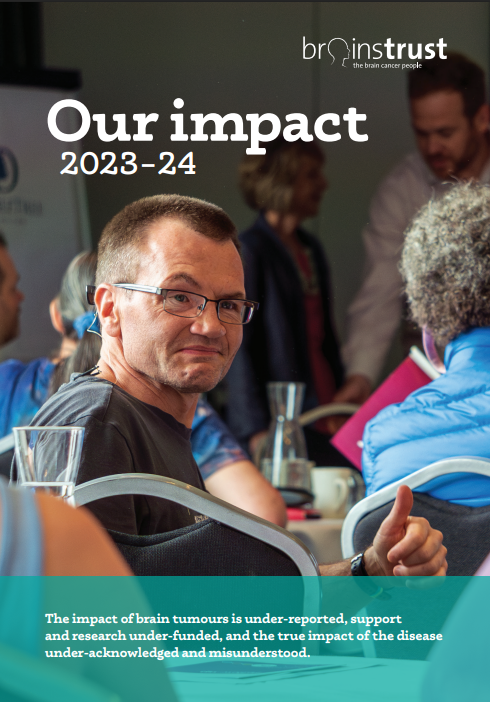Chris and Dave’s marathon trip home

It was a long journey home for Chris Blower and Dave Kerfoot when they laced up their running shoes and set off on foot from their workplace in Samlesbury to their destination of Lytham St Annes.
A marathon for their friend
Normally a short commute in the car, the pair decided to run the distance – a full marathon – to support their colleague and friend Stuart Dolphin, who was diagnosed in 2018 with a grade 4 glioblastoma. Sadly, Stu passed away in May before the big day, so Chris and Dave ran the marathon in his memory.
Before they even set foot out of the door of their workplace, BAE Systems, Chris and Dave had already raised more than £8,000. The pair completed the run in four-and-a-half hours, and were welcomed at St Anne’s Pier by friends and relatives.
Speaking before the day, Chris said:
Doing this sponsored run was just one small thing that we hope can go a long way to raising awareness of brain tumour and the charity that supported both Stu and his family. I miss Stu every day at work, and not one day goes by without me thinking of him and his family
Stu’s diagnosis
Stu was just 29 years old when he was diagnosed with a brain tumour after he started suffering headaches, dizzy spells and began to get his words confused. Scans revealed he had a brain tumour. After undergoing surgery to remove the tumour, Stu and his wife Alex were told he had a grade 4 glioblastoma, the most aggressive form of brain cancer.
Stu received a prognosis of 12-18 months. His optimistic approach meant that he remained positive and continued to live his life to the full. He spent every day at hospital for the next six weeks. He received a combination of chemotherapy and radiotherapy. The hope was that the treatment would slow the growth of the tumour.
Sadly, the tumour did not respond to the treatment. More surgery followed, but this time Stu did not recover as well as he did previously. He became very unwell with an infection. He eventually fought off the infection after an extensive stay in hospital. The removal of the tumour had also affected his speech, leaving him struggling to find the right words.

brainstrust‘s support
Stu’s wife Alex said the impact of the diagnosis was hugely challenging for them both and they had been grateful for the support from brainstrust.
She said:
Before his diagnosis, Stu was most happy on the football pitch, playing golf, watching his beloved Preston North End, going to the gym or walking the dog. He worked hard for his career at BAE Systems and enjoyed his job as Project Manager. The thing about brain tumours is that they have a dramatic impact on the quality of life of those affected. Personally, Stu found that his diagnosis left him with physical differences. He faced mobility problems, fatigue, epileptic seizures, weight gain and hair loss. Besides this, he also lost his driving license, was unable to work or play sport, spent less time with friends and lived in a world of uncertainty.
Speaking about the support received, Chris said: “Stu received great support and answers from brainstrust. By going along to one of brainstrust‘s Meetups, his wife and sister were able to meet others in a similar situation and speak to people who truly understood what they were going through”.
“Our charity helps people like Stu and Alex every day, people who are trying to find their way and adjust to a new life after the diagnosis of a brain tumour. At brainstrust we understand just how bewildering and terrifying this can be to both patients and their families. We’d like to say a huge thank you to Chris and Dave, and all the people who have donated to support them. This is an incredible achievement and it means we can carry on providing support for people whenever they need us” – Will Jones, Chief Executive at brainstrust









